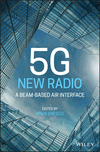Main Radio Interface Related System Procedures
Summary
The use of beamformed signals for initial access is due to the need of scaling the system across the carrier frequencies due to the nature of mandatory beamforming in higher carriers. One of the fundamental elements of beam management is the concept of beam correspondence. This should be seen as a node capability. To enable the plurality of transmission and precoding strategies that are possible to implement with the standard, NR features a flexible and modular channel-state information framework. Radio link failure (RLF) is a procedure where the user equipment (UE) autonomously determines that the radio link is lost. The UE does this by checking whether certain conditions are fulfilled, in which case it declares RLF and performs the associated actions. The basis for radio resource management values are Reference Signal Received Power and Reference Signal Received Quality values.



